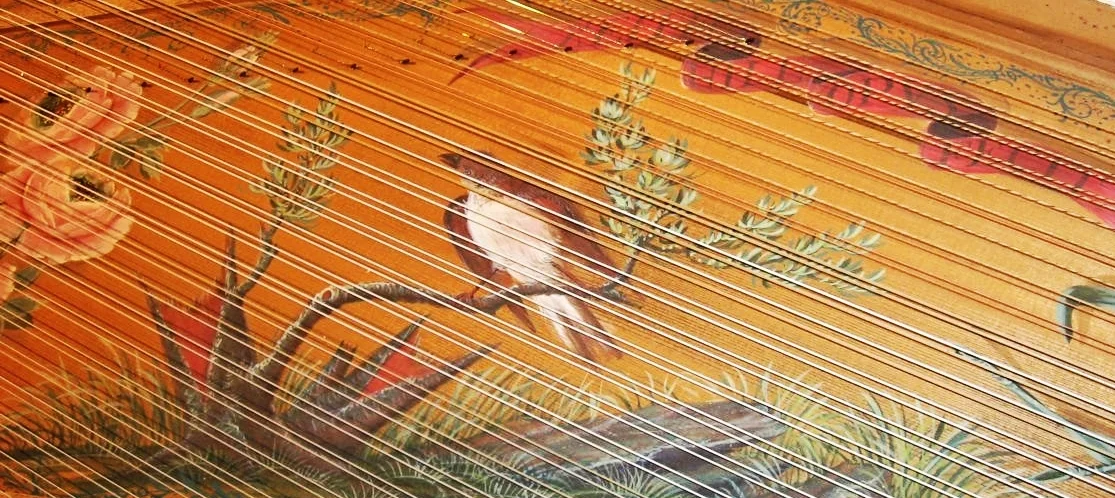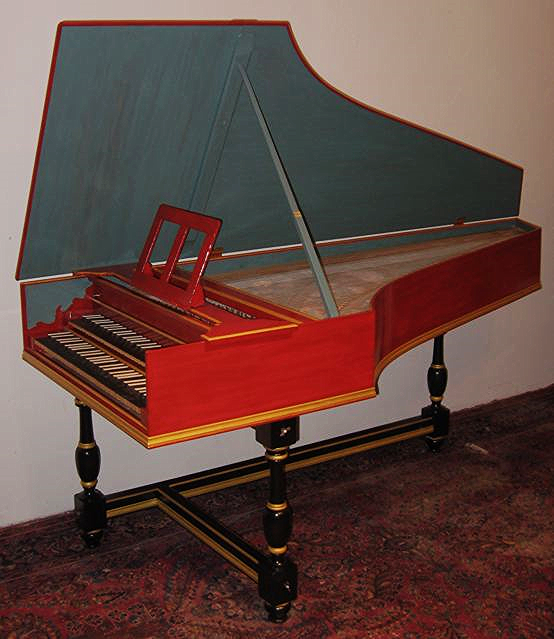My treatise on The True Art of Making Musical Instruments—A Practical Guide to the Hidden Craft of Enhancing Sound is now published and available on Amazon.com. Here is the link for that page.
https://www.amazon.com/dp/1791889611
There has never been a book written that covers the craft of enhancing sound until now. Indeed, most books written about sound are based on the physics of sound. In the 46 years I have been making musical instruments, I have never found it either necessary or useful to know anything about the physics of sound. My reason for this total disregard for such knowledge is that ALL the greatest musical instrument makers from 1400 to 1840 including Stradivari, Guarneri del Jesu, Amati, Ruckers, de Zentis, Blanchet, Taskin, Cristofori, Stein, Hubert, Walther, Graf, Schnitger knew nothing about the physics of sound. That is because all such knowledge wasn’t discovered yet. What these makers knew was vastly more important and valuable, but unfortunately was secreted away only in their instruments.
My attitude when I began making musical instruments in 1972 was to restrict myself to only that knowledge available to those great musical instrument makers. That body of knowledge, which was acquired over a period of 350 years, had as its foundations the teachings of Pythagoras. Based on his ideas of the musical ratios, makers of all kinds instruments developed the craft of enhancing the sounds of their materials to make their instruments sound as beautiful and as resonant as possible. Then, towards the end of the 18th century, with the development of modern scientific methods and attitudes, all that lovingly acquired ancient Pythagorean based knowledge was put aside and immediately forgotten. Even Conrad Graf in the beginning of the 19th century had to relearn that body of knowledge to produce the sounds of his pianos. But little of what Graf had learned was acquired by apprentices in his workshop. Recovering all that lost knowledge was my goal.
This treatise is meant to preserve this knowledge of how the greatest instrument makers in history thought about sound and how to enhance it.
ABOUT MY LAUTENWERKS
I have built eight lautenwerks, the designs of which are all completely different. The first lautenwerk I built was made for my brother, Robert Hill, who is the director of the early music program at the Hochschule für Musik in Freiburg, Germany. It is a single manual instrument that has a special pedal mechanism for moving the single 8' set of jacks toward and away from the player, in imitation of what happens when a lutenist changes the position of his right hand from middle of the string to plucking close to the nut, which changes the timbre from flutey to nasal, from dark to bright...however you want to call it. I also wanted to make the sound as much like a lute sound as possible. Robert has made a number of recordings of the music of Bach believed to have been written for lautenwerk. In one review of his recording, the reviewer commented that the instrument sounded more like a lute than most lutes sound. Its is a wonderful compliment even though I don't agree with it. To me it sounds like a lautenwerk should...very lute-like but clearly not a lute... cool sounding yet neither cold nor dull, but spritely, sweetly singing even though the gut strings are far more attenuated than the metal strings of a harpsichord. The sound sample below demonstrates how the timbre changing pedal mechanism allows the color to be different on repeats without resorting to another keyboard to do the same thing.
Here is a sound sample of that lautenwerk.
Just so you can hear what I mean I am posting a recording made on the only lute that I have made.
Perhaps the most interesting of Robert Hill's recordings is one that he made with Ekkehard Webber of Bach's Sonatas for Viola da Gamba and Lautenwerk instead of Harpsichord. As you can hear from the selection below, the two gut strung instruments are totally complementary producing a decidedly distinctive affective quality.
The second lautenwerk I made went to a player in Europe who asked to have his single manual instrument double strung in gut, with a set of jacks for each set of strings.
Making that instrument inspired me to make a double manual lautenwerk with the famous Bach disposition of 2 x 8's strung in gut and a 4' in brass. I made that instrument for myself in 2000. The photo at the top of this page is of the rosette in that instrument. The photo below is of the finished instrument.
Lautenwerk by Keith Hill Opus 338 in 2000
The Bach disposition harks to when lutes were outfitted with an octave (4') string as the second string in a double strung disposition. The purpose of the octave 4' string was to provide more focus and brilliance to the rather tame tone of the lute. Those were later replaced with an 8' gut string when more volume and breadth of sound was desired more than brilliance. Below I have supplied two sound samples of my personal lautenwerk. The first shows the two 8's sounding separately--alternating on repeats. The second shows the two 8's sounding together followed in the piece with the 4' added.
That lautenwerk is now owned by Yoshio Watanabe and resides in Japan.
The next lautenwerk of note that I made was for Elizabeth Farr. In this instrument, the idea was to build a double manual instrument in the spirit of that made in the 18th century by Johann Nicolas Bach of Jena, which was a large three manual instrument with each manual having its own set of jacks, but which were all plucking only one single choir of gut strings...a kind of super color changing machine. But additionally, Elizabeth asked for a set of metal strings with its own individual set of jacks. Below you can hear recorded sound sample made from a podcast of the first recital she played on the instrument. The most extraordinary thing about this instrument was how the presence of metal strings affected the sound of the gut strings, especially when the jacks for the metal strings were in an off position allowing all the strings to vibrate freely in sympathy with the single set of gut strings. The effect is like the aliquot system of strings invented by Julius Bluthner on some his pianos...every note has a halo of reverberance--like pressing the damper pedal on a piano--on every note. So the instrument carries its own "cathedral like" acoustic.
The lautenwerk below I built in 2014; its my Opus 458. In this instrument I made it a simple single manual and single gut strung lautenwerk with two sets of jacks plucking as far apart as possible for maximum color difference. But I also added a set of brass 4' strings but allowed no jacks for this set of strings. I added the 4' brass strings strictly for the "d'Amore" effect of the sympathetic vibrating because I am smitten by that effect on the lautenwerk. I now have professional quality recording of this lautenwerk. Wolfgang Rübsam is an organist, recording engineer and harpsichordist and a friend. He made two recordings on my Lautenwerk for me to post on my website here. The recordings made with Wolf's professional quality microphones give you an idea of what the instrument sounds like.
opus 458
In the recordings below, Wolf was interested specifically in exploring the musical communication technique called "Vacillare". This technique may be described with the following: the singer should endeavor to sing before the beat or after the beat and never with the beat. This technique is one of the most beautiful effects in music. He was also inspired by F. Griepenkerl's 1840 description, written when he was an old man, of how he was taught by his teacher, Nickolas Forkel, who was taught by WF Bach, who as taught by JS Bach. He wrote, "Bach himself, his sons, and Forkel played the masterpieces with such a profound declamation that they sounded like polyphonic songs sung by individual great artist singers. Thereby, all means of good singing were brought into use. No Cercare , no Portamento was missing, even breathing was in all the right places. Bach's music wants to be sung with the maximum of art."
He was convinced when it was pointed out how Bach, in his autograph manuscripts as verifiable from facsimilis , actually writes his idea of "vacillare" directly into the score by writing the notes played by the right hand fractionally ahead of the notes of the left hand, when measured vertically, about 60% of the time and reverses this about 40% of the time. You can hear for yourself how this creates a feeling of freedom in the flow of the music as the notes of the right hand sing unconstrained by the beat that otherwise would stifle all feeling of freedom in the music.
To hear more music of Bach played on my Opus 458, go to www.wolfgangrubsam.com, there you will find the complete recordings of Bach's Well Tempered Clavier as well as Bach's Art of Fugue. What is so fascinating about the performance practice of Wolfgang Rubsam's playing is how really easy it is to follow all the voices in the complex counterpoint. It is clear to me that this IS the reason why Bach played in the manner so described by Griepenkerl quoted above.





